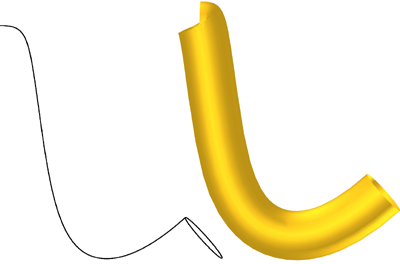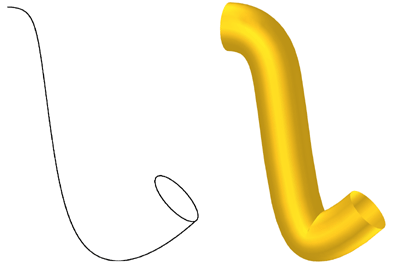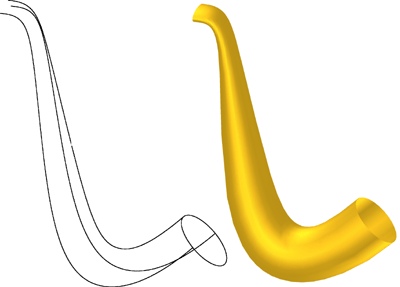Sweep Part Creation: Useful Tips
3-D Standard > New > C-edge sweep 
To create the best possible sweep surfaces, you should keep the following tips in mind:
How many guidelines are required?
- In general, you should try to use the smallest possible number of guidelines to create a part.
- One guideline is sufficient if you want the cross-section from which the part is to be created to be the same for the entire part.
- If one guideline would, in principle, be sufficient, but the part tilts during the sweep, you can use the direction specification to bring everything back to the perpendicular again. This applies particularly to sweeps along spiral-type guidelines.
- You use two guidelines whenever you want the type of cross-section to be the same throughout, i.e. if you want the section through the sweep part always to be a circle, but with different radii. You can use two guidelines, for example, to prevent complicated cross-sections from tilting or if you would like to provide a rough definition of the two edges of a part.
- You use three guidelines if you want the shape of the cross-section to be compressed or distorted during the sweep, e.g. if you want a circular cross-section to turn slowly into an oval section.
- Transposing the guidelines does not necessarily produce the same result. The priority of the guidelines is defined by selection. The first guideline is the most important, while the third has the least influence on the part shape.
Avoid self-intersections
- Self-intersections generally occur when the radius of the guidelines is too small compared with the radius or the width of a cross-section.
- A sweep is less susceptible to self-intersections if the cross-section is positioned on the outside of the curved guidelines.
The part should be roughly defined by means of guideline and cross-section(s).
- In general, the desired sweep part is more likely to meet expectations if the cross-section is positioned as closely as possible to the guidelines.
- Cross-sections that are far from the guideline do not necessarily produce a result that is plausible for the user at first sight.
- Particularly in the case of non-plane cross-sections, a calculable part is produced if cross-section and first guideline intersect.
The guideline must not contain bends (angle >0°).
Examples:



